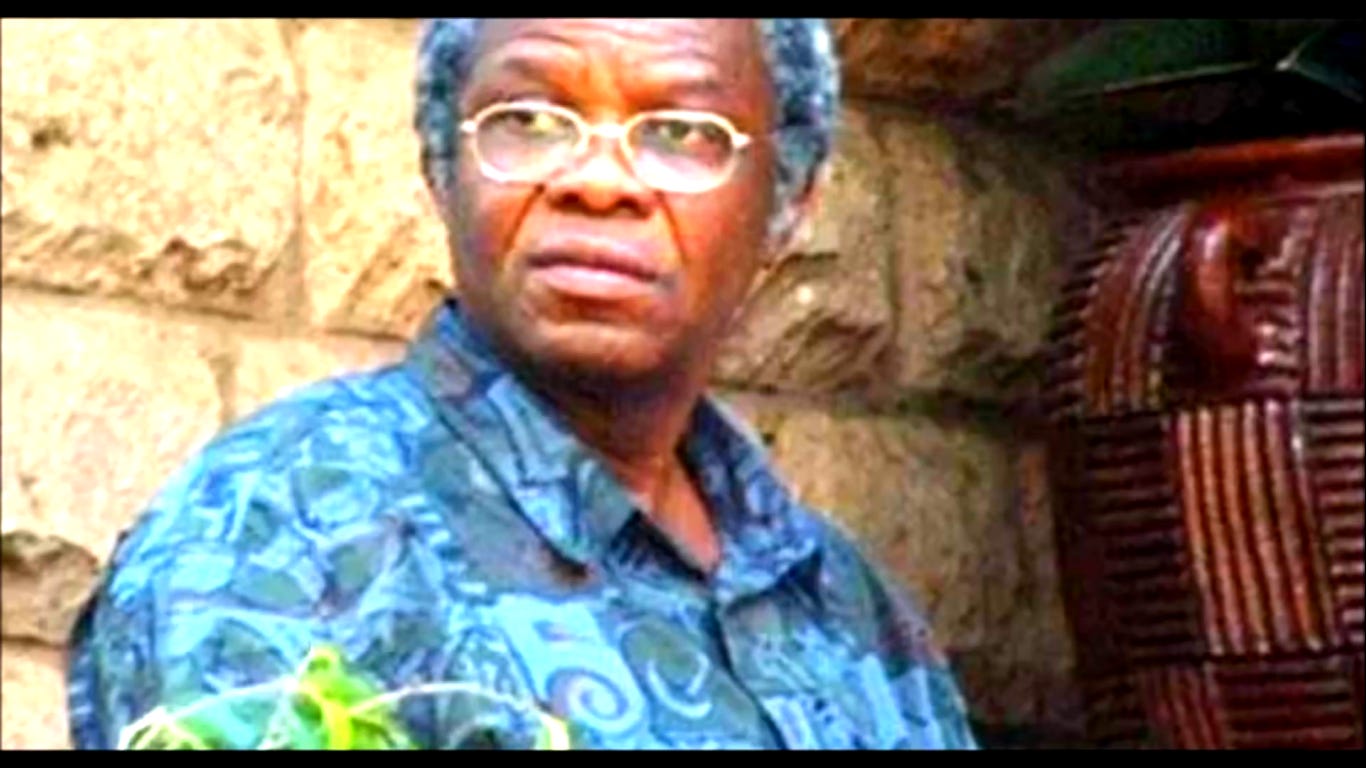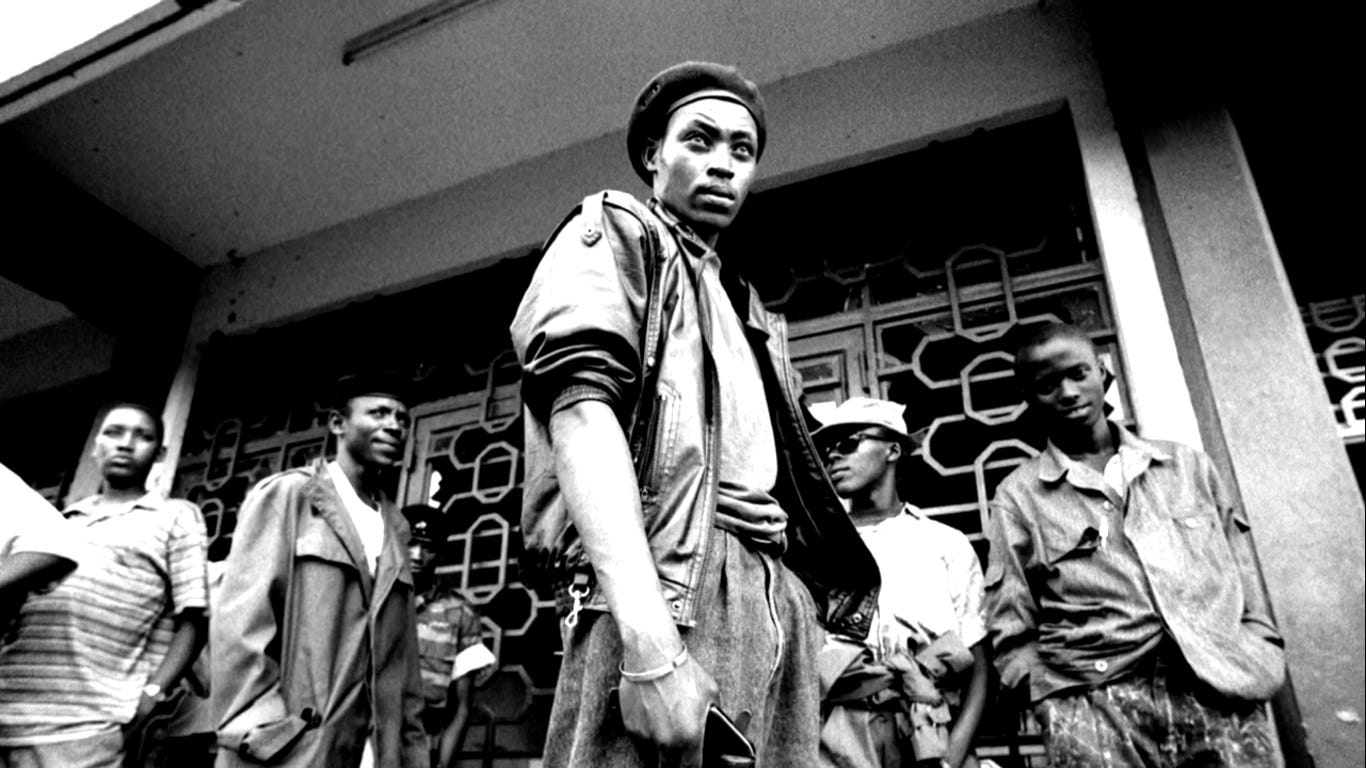How the Rwandan Airwaves were weaponized by Felicien Kabuga.
Continuation of Rwanda's Generation of Hate.

What made the killings so organized??? Rwanda has always been a tightly controlled society, organized like a pyramid, from each district, up to the top of the government. The then governing party, EMINERIDE, had a youth wing called the INTEREHAMWE, which was loosely translated into the Hutu language as those who hunt and kill together.
It was a paramilitary arm of the government which was turned into a militia to carry out the slaughter.

The Hutu extremists set up a TV-Radio station RTLM which spread propaganda and messages of hate to the Tutsis calling them cockroaches, meaning, KILL THE TUTSIS.
The genocide was planned and deliberate, authorized from the top, widespread, ruthless, and barbaric.
It is so shocking to see how media can be weaponized against mankind. This is the story of Felicien Kabuga, the role that he and his radio station RTLM played in the 1994 genocide.
Kabuga and his journalists took advantage of the entrenched fears and resentments of the Tutsis by the Hutus to spread messages of hate. The station used to refer to the Tutsis as snakes and cockroaches.
RTLM needed listeners, therefore they used the strategy of good music to attract the youth who would, later on, be weaponized to carry out the onslaught by ingesting the messages of hate.
The RTLM journalist was being forced to spread the messages of hate.
She often and repeatedly called for the murder of the Tutsis by name. She coordinated with the Interahamwe by revealing the whereabouts of the Tutsis who were in hiding.
She told the Interahamwe, “Not to kill the cockroaches by the bullet, but to cut them into pieces by a machete.”
The Hutu rebels were being guided by the RTLM presenters on where the Tutsis were hiding, and the RTLM used to get that information from the soldiers, politicians, and also from the citizens, their own listeners.
When asked what compelled her to do so she often points fingers at the chief financier of the genocide, Felicien Kabuga. She was arrested and sentenced to life imprisonment in 1999.
In 1994, one of the people who were in the government appealed to Kabuga to stop the killings of the Tutsis. November 1993, RTLM was summoned by the minister of information and Kabuga led the delegation. They were told that the radio station was incendiary and was inciting genocide against the Tutsis. This was not repealed and instead, the minister and his family were totally unelected on the 7th of April 1994.
RTLM had numerous stakeholders including the then-president Juvenile Habyarimana and the members of his administration, and those ties to the government would be proven critical.
A study conducted in 2014 concluded that the Hutu militia violence increased in villages with RTLM reception, where the signals traveled faster, and more Tutsis would be killed.
RTLM was meant to reach the lowest administrative area in the country because apart from their own transmitters, they were facilitated by the national radio, RADIO RWANDA.
RTLM had some links with the state radio, Radio Rwanda, and used some of its transmission signals and some of its resources.
IT WOULD TRUE TO SAY THAT THE RTLM AND RADIO RWANDA COALESCED IN THE 1994 GENOCIDE.
The world watched as Rwanda tore itself apart. Failure of the US not intervening also had an impact on the genocide. At the same time, the UN reduced its troops from 2500 to 500, these were the peace-keeping troops.
Tensions were escalating, and despite the US wanting not to intervene, the gravity of the situation in Rwanda forced the US to intervene. The then US president Bill Clinton then later apologized for the actions of the US, saying his government was totally unaware of the scale of the situation.
The US knew what was happening and considered targeting RTLM, by bombing the station’s antennae, or jamming signals by flying overhead., the latter option had 8,500$ per flight, and was deemed too costly.
But despite the interventions by the US, the killings continued.
It was not until Rwanda’s Patriotic Front, the RPF, a Tutsi Rebel Force formed in Uganda reached Kigali to target the RTLM.
As the world turned its back against Rwanda, Paul Kagame, a former refugee, turned rebel leader, turned liberator.
The RPF led by Paul Kagame knew that bombing the station would save lives.
The well-organized RPF, backed by Uganda and some Hutu moderates bombed RTLM on April 1994, 17th, but they were not successful since the antenna was not hit.
RTLM kept on working but on the 4th of July, the RPF had seized more territories, and that was the moment that the RTLM journalists knew it was time for them to leave.
After the RTLM defeated the government forces, many of the genocide perpetrators including Felicien Kabuga fled the country. Some 2million Hutu refugees, both civilians and some of those involved in the genocide also fled the country to neighboring countries such as Zaire Congo, Burundi, and Tanzania for fear of retribution by the RTLM.
Two weeks later, on July 18th, the RPF announced that the war was over, and declared a ceasefire, and named PASTELVIZIMUNGU as president.
Human Rights groups say that the RPF killed thousands of civilians as they took power and after they went to DR Congo to pursue the Interahamwe, THE RPF DENIES THIS.
Three years later in 1997, Kabuga was indicted by the UN’s International Criminal Tribunal for Rwanda on two counts of crimes against humanity, and 5 counts of genocide including public and direct incitement to commit genocide.
In March 1999, everything changed, 5 years after the genocide, when a group of tourists in neighboring Uganda were attacked by the exiled Hutu militia and were killed including 2 US nationals.
This was described as active revenge of the US perceived support of the Tutsis, and this made the US be serious on the issue of prioritization.
The press conference for the search of Kabuga was set in Nairobi-Kenya.
By this, Kabuga was on the Run, his whereabouts unknown.



